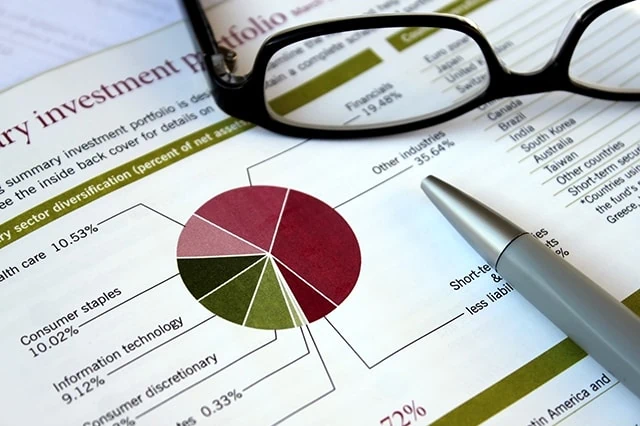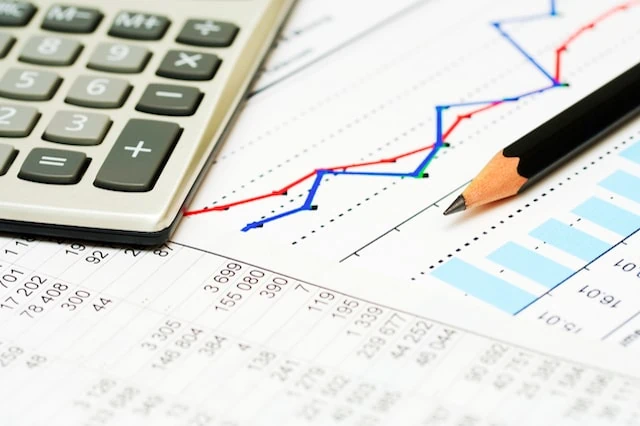Charles Schwab is perhaps best known for its various investment accounts. It’s one of America’s greatest pioneers and providers of brokerage and retirement accounts—and it has been for decades.
But even if you don’t invest using a Schwab account, Schwab can still help you build your nest egg. That’s because Schwab also offers some of the largest and most cost-efficient funds you can find—including numerous funds you should consider if you take advantage of the tax benefits of investing your health savings account (HSA) money.
Let me introduce you to a handful of these Schwab mutual funds—each of which is inexpensive, effective, and sport long-term investing objectives. These funds have been chosen for their suitability in tax-advantaged plans, making them perfect for holding within HSAs. But if you don’t have an HSA, they’re also tax-smart choices in IRAs and (when available) 401(k)s.
Disclaimer: This article does not constitute individualized investment advice. These securities appear for your consideration and not as personalized investment recommendations. Act at your own discretion.
Table of Contents
Can You Invest Through Your HSA?

Health savings accounts (HSAs) can best be described as part cash account, part investment account. While the money is primarily intended to be spent on qualified medical expenses, you can invest some or all of it—and many people (myself included) do.
While many HSA providers offer several investment options, you’ll often need to meet a minimum balance in your HSA before you can start investing. For instance, some HSA administrators might require you to have at least $2,500 in your cash account before you can invest; but some accounts don’t have this requirement.
How to Invest in Your HSA

As far as how to invest is concerned, that’s largely dependent on the investments your HSA provider offers, which can vary widely. (We’ll cover our top Schwab retirement picks for your HSA account momentarily.)
Some HSAs are self-directed and let you choose from thousands of stocks, bonds, exchange-traded funds (ETFs), and mutual funds. In that case, how you invest is just about the same as how you’d invest in a traditional brokerage account or individual retirement account (IRA).
However, other HSAs might require you to choose from a very limited set of mutual funds or ETFs. Even then, the process is pretty simple—just select which fund or funds you want to purchase with your available funds.
If you have a high-deductible health care plan (HDHP) and are eligible for an HSA, research different HSA providers and their investment choices to determine which investments are available to you.
What Should You Want in a Retirement Fund?
When investing your retirement savings, you need to consider a few critical factors.
To start, a robust retirement portfolio should provide diversification across various asset classes. This typically means stocks and bonds, though it can also mean alternative asset classes such as real estate or commodities. Diversifying your retirement portfolio across these asset classes can help defray your risk and smooth your returns.
Costs matter too. Every dollar spent on fees and expenses is a dollar no longer available to grow and compound over time, so keeping expenses cut to the bone is vital. Good news there: The best Schwab retirement funds will generally have some of the lowest fees and expenses in the business.
And don’t forget taxes. A taxable account, like a standard brokerage account, is better suited to take advantage of certain tax-advantaged investments, such as municipal bonds. For tax-advantaged accounts, such as HSAs, some of the best investments include bond funds and actively managed stock funds. (I’ll explain why when we get to those funds.)
Finally, you ideally want your retirement portfolio to produce regular dividend income. Stocks can regularly experience nasty corrections and bear markets, but a good income fund can provide for your living expenses without forcing you to sell at an inopportune time.
Related: Best Schwab Retirement Funds for an IRA
Why Schwab?
Charles Schwab is a U.S.-based brokerage and banking company founded in 1971 as a traditional brokerage company and then as a discount brokerage service in 1974. It is headquartered in San Francisco, California, and operates primarily throughout the United States, but also has international operations.
The firm is the largest publicly traded investment services firm with more than $6 trillion in assets under management (AUM). Schwab offers a wide range of financial services, such as investment advice and management, trading services, financial planning, banking services, workplace and individual retirement plans, annuities, and more.
On the product side, Schwab features more than 100 different funds boasting more than $870 billion in AUM. Schwab’s funds feature no load or transaction fees—which is advantageous in HSAs, IRAs, and taxable brokerages—and below-industry-average expenses. Schwab offers actively managed funds run by seasoned teams, but it’s also one of the largest providers of indexed mutual funds.
In short: Schwab’s best mutual funds for retirement are generally going to be among your top options period, and they generally won’t make a dent in your wallet.
Related: 7 Best Schwab Index Funds for Thrifty Investors
The Best Schwab Retirement Funds for an HSA in 2024
With all that out of the way, let’s dig into some of the best Schwab retirement funds to hold in an HSA to consider diving into this year.
I’m splitting this list into needs for two types of investors:
- People treating their HSA as a second IRA. They’re looking for some long-term growth, and they’re willing to accept some—not a lot, but some—risk.
- People who just want to earn a little money on their health savings. These people plan on using their HSA for health-related expenses, but would like to make at least a little money while those funds are just sitting around.
Also note that each fund here comes with a Morningstar Portfolio Risk Score, which measures the risk presented by a managed investment’s (fund’s) portfolio. The higher the score, the higher the risk. Morningstar groups the scores as such: 0-23 is conservative, 24-47 is moderate, 48-78 is aggressive, 79-99 is very aggressive, and 100 and above is extreme.
HSA-as-an-IRA Fund #1: Schwab Small-Cap Equity Fund

- Style: U.S. small-cap equity
- Assets under management: $608.2 million
- Expense ratio: 1.09%, or $10.90 per year for every $1,000 invested
- Dividend yield: 0.3%
- Minimum initial investment: None
- Morningstar Portfolio Risk Score: 88 (Very aggressive)
An old Wall Street maxim says “you never go broke taking a profit.” There is a lot of wisdom in that quote. As a general rule, buying and holding good stocks or good funds and allowing them to compound over years or even decades is the way to go. But having at least part of your portfolio in actively traded strategies can also make sense, particularly in bear markets. Actively traded strategies have their stretches when they outperform passive index strategies, and they can potentially help you to avoid major declines.
Unfortunately, active trading strategies are also woefully tax-inefficient, particularly if your holding period is less than a year. Short-term capital gains are taxed as ordinary income, meaning you could be sharing up to 37% of your gains with Uncle Sam.
So, it makes sense to hold funds that do a lot of active trading in a tax-deferred retirement account. There is no precise, universally accepted threshold for what constitutes “a lot” of active trading, but I would consider any fund with portfolio turnover (how much of the portfolio’s holdings are turned over, or replaced, in a given year) over 30% or so to be fairly tax-inefficient. The higher that number goes, the more inefficient the fund.
Small-cap equity funds typically boast very high turnover. Because smaller companies are often younger companies, the small-cap space tends to move quickly. Successful companies “graduate” to mid- or even large-cap status, and those that are unsuccessful often disappear altogether. So, if actively managed funds in general are best held in a tax-deferred account, this would be even truer for actively managed small-cap funds.
As an example, let’s take a look at the Schwab Small Cap Equity Fund (SWSCX). This actively managed fund has a turnover rate of about 55%, meaning more than half of the portfolio holdings change in any given year.
Small-cap stocks have lagged their large-cap peers in recent years, as the market has been dominated by the “Magnificent Seven” mega-cap stocks. Still, SWSCX has managed to return an annualized 10.0% since inception, and that’s not too shabby.
Want to learn more about SWSCX? Check out the Schwab provider site.
Related: 7 High-Quality, High-Yield Dividend Stocks
HSA-as-an-IRA Fund #2: Schwab Global Real Estate Fund

- Style: Global REIT
- Assets under management: $303.4 million
- Expense ratio: 0.75%, or $7.50 per year for every $1,000 invested
- Dividend yield: 3.3%
- Minimum initial investment: None
- Morningstar Portfolio Risk Score: 72 (Aggressive)
Real estate has been a preferred asset class since the dawn of human civilization. And today, real estate investment trusts (REITs) offer the potential for both high yield and respectable capital gains.
REITs enjoy a special tax status that allows them to avoid corporate taxation so long as they distribute at least 90% of their net profits as dividends. Because of this tax incentive, REITs tend to be one of the highest-yielding sectors and a perennial favorite among income investors.
Unfortunately, this also makes REITs very tax-inefficient, as a large percentage of the total return comes from taxable dividends. What’s more, REIT dividends are generally not classified as “qualified dividends.” Qualified dividends are taxed at the long-term capital gains rate (0%, 15% or 20% depending on your tax bracket). Non-qualified dividends are taxed as ordinary income, like bond interest, and can face rates as high as 37%, depending on your bracket. Thus, it makes more sense to hold REITs and REIT funds in a tax-advantaged fund like an HSA rather than a taxable brokerage account.
Schwab investors looking for real estate exposure could consider the Schwab Global Real Estate Fund (SWASX). The fund is a diversified REIT fund with a global presence. Approximately 60% of the fund is invested in American REITs, with most of the remainder allocated to Europe and Japan. SWASX also has smaller allocations to China, Singapore, Canada and Australia. The portfolio has minimal exposure to the office sector, which has been affected by work-from-home policies, and is most heavily allocated to industrial and logistics properties.
This is a growth-focused real estate fund that focuses on total return, including both capital gains and income. But its 3.3% current yield is mighty competitive in a world in which the S&P 500 yields only 1.2%.
Another reason to consider SWASX for your retirement account? The fund generates a lot of short-term capital gains, as it has annual turnover of about 86%. All of that trading creates taxable income in a regular taxable brokerage account.
Want to learn more about SWASX? Check out the Schwab provider site.
Related: 7 Best T. Rowe Price Funds to Buy
HSA-as-an-IRA Fund #3: Schwab S&P 500 Index Fund

- Style: U.S. large-cap stock
- Assets under management: $101.1 billion
- Expense ratio: 0.02%, or 20¢ per year for every $10,000 invested
- Dividend yield: 1.2%
- Minimum initial investment: None
- Morningstar Portfolio Risk Score: 71 (Aggressive)
If we’re talking about tax consequences alone, a taxable account is much better positioned to take advantage of an index fund’s tax efficiency than a tax-advantaged account.
But if you’re looking to get growth out of your HSA, it might make sense to hold an S&P 500 index fund—even if you’re not maximizing your tax benefits that way.
The vast majority of fund managers who run large-cap funds (funds that invest in larger companies) struggle to consistently beat the S&P 500 Index, particularly after fees. In the first half of 2023, 60% of active managers underperformed the S&P 500, according S&P Dow Jones Indices. That’s no anomaly: A majority of active managers have failed to beat the S&P 500 in 20 out of the past 23 years.
So if you can’t beat it, join it.
The Schwab S&P 500 Index Fund (SWPPX) isn’t just a cheap way to get access to the S&P 500—it’s one of the cheapest ways across both mutual funds and ETFs alike, charging a razor-thin expense ratio of just 0.02%. It’s harder to get much closer to free than that.
The S&P 500 is a collection of the largest and most dominant American companies. To be selected for this stock market index, a company must have a market capitalization of at least $18.0 billion, its shares must be highly liquid (shares are frequently bought and sold), at least 50% of its outstanding shares must be available for public trading, it must have positive earnings in the most recent quarter, and the sum of its previous four quarters must be positive. Once a company is in the index, it doesn’t necessarily get kicked out if it fails to meet all of the criteria at some point in the future, but the selection committee would take that under consideration.
Turnover (how much the fund tends to buy and sell holdings) tends to be low, as only a handful of stocks enter or leave the index in any given year. This makes SWPPX an extremely tax-efficient option for taxable investment accounts. But if you want growth in your HSA, consider holding SWPPX there, too—sure, you won’t enjoy a premium tax edge, but you’ll be putting your money into one of Schwab’s best retirement funds.
Want to learn more about SWPPX? Check out the Schwab provider site.
Related: 7 Best Schwab Index Funds to Buy
HSA-as-an-IRA Fund #4: Schwab Dividend Equity Fund

- Style: U.S. large-cap dividend
- Assets under management: $533.0 million
- Expense ratio: 0.88%, or $8.80 per year for every $1,000 invested
- Dividend yield: 1.9%
- Minimum initial investment: None
- Morningstar Portfolio Risk Score: 70 (Aggressive)
Qualified dividends, as we mentioned above, are taxed at the same lower rates as long-term capital gains. This is by design.
Dividends were previously taxed like bond interest, as ordinary income. But following the tech bust of 2000-02, the Bush administration changed the tax laws in an attempt to encourage more responsible behavior from both investors and the companies they invest in. The thinking was that lowering the tax on dividends would encourage more companies to pay dividends and encourage more investors to take a long-term investor mindset as opposed to a short-term gambler mindset.
It was a godsend for income investors, but let’s be clear: Dividend stocks are still woefully tax-inefficient. Long-term capital gains remain unrealized—and thus not taxable—until you sell, whereas dividends are still taxed when they are received … even if at a lower rate than in decades past.
For this reason, it’s generally going to make sense to keep dividend stocks and dividend funds in a tax-deferred retirement account. And one worthy contender is the Schwab Dividend Equity Fund (SWDSX).
SWDSX includes some traditional high yielders among its largest holdings, including Big Oil dominators Exxon Mobil (XOM) and Chevron (CVX). But while the fund might have a dividend focus, that doesn’t mean that it’s a stodgy widows-and-orphans investment. SWDSX is full of quality blue-chip stocks with a history of consistently paying dividends, including growth names like Microsoft, which is the fund’s third-largest holding.
If you’re looking for a good collection of dividend-paying workhorses that you can own for the long term, SWDSX is a worthy addition to your retirement portfolio.
Want to learn more about SWDSX? Check out the Schwab provider site.
Related: 7 Best Schwab Funds to Buy
Earn Money on Health Savings Fund #1: Schwab Target-Date Funds

- Style: Target-date
- Expense ratio: Schwab Target Funds: 0.26%-0.59%, or $2.60-$5.90 per year for every $1,000 invested; Schwab Target Index Funds: 0.08%, or 80¢ for every $1,000 invested
- Minimum initial investment: None
- Morningstar Portfolio Risk Score: 25-66 (Moderate to aggressive)
One of the challenges in retirement planning is getting the asset allocation right, or having an asset class mix that is appropriate for an investor at your age and stage of life. An ideal portfolio for a 20-year-old is likely going to be very different from that of a 40-year-old, and both those portfolios will be different from what’s ideal for a 60-year-old.
That’s where target-date funds can really add value.
Target-date funds—also called life-cycle funds—are a type of mutual fund that are designed to change their asset allocation over time. Target-date funds start out invested heavily in stocks, then slowly reduce their stock exposure and replace it with bond exposure as they approach their target retirement date, following a glide path.
The target retirement dates are intended to be estimates; they don’t have to be super precise. Generally, most mutual fund families will create target-date funds in five-year increments (say, 2025, 2030, 2035, etc.).
Given that they hold both stocks and bonds, even at the more aggressive end, target-date funds tend to be less risky than pure equity funds. And you can control your risk—if you want a heavier allocation to stocks, pick a fund with a later target date, and if you want more bonds, pick a fund with an earlier target date.
Schwab offers two target-date fund series:
- Schwab Target Funds: These hold a collection of actively managed and index funds. While most of Schwab Target Funds’ holdings are other Schwab mutual funds, they will also hold funds from outside providers, including Dodge & Cox and Baird.
- Schwab Target Index Funds: These hold Schwab ETFs exclusively.
In general, Schwab’s target-date funds are economical, though the Schwab Target Index Funds are flat-out cheap, at just 0.08% in annual expenses. All of Schwab’s target-date products hold a combination of U.S. and international stocks and bonds.
Want to learn more about Schwab’s target-date funds? Check out the Schwab provider site.
Related: The 10 Best Vanguard Funds to Buy for the Everyday Investor
Earn Money on Health Savings Fund #2: Schwab US Aggregate Bond Index Fund

- Style: U.S. intermediate bond
- Assets under management: $5.1 billion
- Expense ratio: 0.04%, or 40¢ per year for every $1,000 invested
- SEC yield: 4.2%*
- Minimum initial investment: None
- Morningstar Portfolio Risk Score: 19 (Conservative)
Bonds should be a core holding of just about any portfolio. They also happen to be one of the most tax-inefficient asset classes on earth because the bulk of their returns will generally come from interest paid, and interest income is taxed as ordinary income. If you’re in the 37% tax bracket, then you’re losing 37% of your bond interest to taxes.
For this reason, it will virtually always make sense to hold bonds and bond funds in an HSA, IRA, 401(k), or other tax-deferred account.
The Schwab US Aggregate Bond Index Fund (SWAGX) is a diversified option that covers a wide swath of the bond market.
The fund offers broad exposure to more than 8,000 U.S. government bonds, investment-grade corporate debt, and mortgage-backed securities (MBSes). Currently, 42% of the portfolio is invested in American government debt, 26% is invested in MBSes, and 24% is invested in corporate bonds, with the remainder invested in modest positions in foreign government debt and other investments.
SWAGX is diversified across the yield curve, with maturities ranging from less than a year to over 20 years. But one of the other most critical metrics to consider when considering bond funds is duration, which is a measure of interest-rate sensitivity. As an example, a bond with a duration of 2 years would see its price rise by 2% if interest rates fell by 1% (or conversely, would see its price fall by 2% if interest rates rose by 1%). The actual calculation of duration is fairly complex; it’s the weighted average of the bond’s cash flows. But the key takeaway is that, all else equal, the longer a bond’s time to maturity, the higher its duration—and thus the higher the interest-rate risk.
Overall, the fund has a duration of 6.2 years. So, the fund has moderate interest-rate risk. A rise in interest rates of 1% would mean a price decline of about 6%. But remember: This cuts both ways—a fall in interest rates could mean significant capital gains.
* SEC yield reflects the interest earned across the most recent 30-day period. This is a standard measure for funds holding bonds and preferred stocks.
Want to learn more about SWAGX? Check out the Schwab provider site.
Related: 7 Best Schwab Funds You Can Buy: Low Fees, Low Minimums
Earn Money on Health Savings Fund #3: Schwab Short-Term Bond Index Fund

- Style: U.S. short-term bond
- Assets under management: $1.5 billion
- Expense ratio: 0.06%, or 60¢ per year for every $1,000 invested
- SEC yield: 4.2%
- Minimum initial investment: None
- Morningstar Portfolio Risk Score: 8 (Conservative)
With the yield curve inverted as it is today (meaning that short-term rates are higher than long-term rates), it makes sense to keep a good chunk of your overall bond exposure in short-term bond funds.
One solid short-term bond option is the Schwab Short-Term Bond Index Fund (SWSBX). A little over two-thirds of the portfolio is invested in U.S. government securities, a quarter is in high-quality corporate short-term bonds, and the remaining sliver is in foreign government bonds.
SWSBX has a duration of just 2.6 years, meaning its risk associated with rising interest rates is minimal. So if you’re looking for a low-stress addition to your HSA, this Schwab retirement fund fits the bill.
Want to learn more about SWSBX? Check out the Schwab provider site.
Related: 10 Best Fidelity Funds to Buy
How Does Your Portfolio Look? Ask Empower

More than 3 million users are putting their retirement on track by putting Empower’s tools and/or advisory services to work for them.
Wondering how your portfolio is shaping up? Sign up with Empower to use its free Investment Checkup tool, which can help you assess your portfolio risk, analyze past performance, and get a target allocation for your portfolio. You can even compare your portfolio to both the S&P 500 and Empower’s “Smart Weighting” Recommendation.
And if you want a fuller advisory experience? Empower’s full-service Wealth Management account pairs the firm’s tools with skilled human management. Empower will create a recommended portfolio spanning six asset classes, then help you implement your plans by giving you access to financial advisors who can guide you through retirement planning, college savings, workplace stock options, and more.
Regardless of how much money you bring to the table, if you sign up, you will be given the option to schedule an initial 30-minute financial consultation with an Empower advisor.
- Empower offers both a free set of portfolio, net worth, and cash flow tracking tools, as well as paid asset management service.
- Link Empower to your bank and investing accounts, credit cards, and more to see a single view of useful information and data, including your net worth.
- Empower Advisory Group offers a comprehensive wealth management service known as Personal Strategy. This managed account solution provides clients with discretionary investment management, personalized portfolio construction, and access to financial planning support. Accounts investing $100k to $250k receive unlimited advice and retirement planning help from financial advisors, as well as a professionally managed ETF portfolio with reviews upon request. Higher asset tiers offer access to dedicated advisors, estate planning, and tax specialists, plus additional investment options like access to private equity.**
- Special offer: If you have $100k+ in investible assets, sign up with our link to schedule a free initial 30-minute financial consultation with an Empower professional.
- Free portfolio tracker (Dashboard)
- Free net worth, cash flow, and investment reporting tools (Dashboard)
- Tax-loss harvesting (Personal Strategy)
- Dividend reinvestment (Personal Strategy)
- Automatic rebalancing (Personal Strategy)
- Low investment expense ratios (Personal Strategy)
- High number of investment accounts supported (Personal Strategy)
- High $100k minimum for investment management (Personal Strategy)
- Moderately high investment management fee (0.89% AUM) compared to other online advisors (Personal Strategy)
Related: Best Schwab Retirement Funds to Hold in a 401(k)
Is Investing Health Savings Account Funds a Good Idea?
Yes, it can be a good idea to invest the funds in your health savings account—after all, investing is generally the best way to grow wealth over time. But you should also keep at least a portion of your HSA balance saved as cash so you can still easily spend it if you need it.
For instance, I typically keep my estimated annual out-of-pocket expenses in the savings portion of my HSA and invest the remaining balance for long-term needs, such as medical expenses in retirement. This gives me added peace of mind that the money is available if we can’t afford to cover unexpected health care costs with our normal checking account.
Related: 9 Best Fidelity Index Funds to Buy
Why You Should Invest Your HSA Funds

Some people just aren’t in a financial position where they can invest their HSA funds. But if you are, there are oh-so-many reasons to put at least some of that HSA money to work.
1. Triple Tax Advantage
HSAs offer an impressive trifecta of potential tax benefits, including:
- Pre-tax contributions: Contributions to an HSA made via payroll deduction are pre-tax. Any contributions you make on your own (not via payroll deduction) may be 100% tax-deductible.
- Tax-free investment growth: Your HSA investment earnings and interest earned on the savings portion aren’t subject to taxes either.
- Tax-free withdrawals for qualified medical expenses: If you withdraw HSA dollars for a qualified medical expense, you won’t be taxed on the withdrawal.
You will pay income taxes and a 20% penalty on withdrawals for non-qualified costs before age 65. However, after age 65, while you’ll still have to pay ordinary income tax on non-qualified withdrawals, you’ll no longer have to pay any penalties.
2. Long-Term Growth
Chances are your health care expenses will probably rise as you age. If you have a high-deductible health plan and start investing in an HSA early, you can build a sizable nest egg for medical costs (or other expenses) in retirement. This will provide some assurance that your future health care costs will be covered even if they grow more expensive when you’re older.
3. Investment Options
Similar to what you’d see with a taxable brokerage account, HSAs sometimes offer numerous investment options, including individual stocks, bonds, certificates of deposit (CDs), funds, and more.
For instance, with a self-directed HSA, investors can allocate a portion of their investments to equities, fixed-income assets, exchange-traded funds (ETFs), and mutual funds. Some HSA administrators even support fractional share investing, which makes higher-priced shares more accessible for investors working with smaller dollar amounts.
Related: 6 Common HSA Mistakes to Avoid
Do I Qualify for a Health Savings Account (HSA)?

To be eligible for a health savings account, you’ll need to be enrolled in a qualifying high-deductible health plan (HDHP). If you enroll in a high-deductible health plan through your employer, you can open an HSA account through your employer if they also offer that, but if not, you can sign up for your own personal HSA account.
For 2024, deductibles with an HDHP are at least $1,600 for self-only coverage ($1,650 in 2025) or $3,200 for family coverage ($3,300 in 2025), which can be a hefty sum to pay out of pocket. But pre-tax money saved in your HSA can be used to offset those costs and other qualified medical expenses.
Schwab Funds for Retirement: Frequently Asked Questions (FAQs)

What is the minimum investment amount on Schwab mutual funds?
Schwab is one of the most friendly fund companies for beginners. That’s not just because both its mutual funds and ETFs sport below-industry-average expense ratios, but because you don’t need much money to invest in them in the first place. Most Schwab mutual funds have the barest of investment bare minimums—you can literally start with as little as $1.
That’s extremely beneficial in self-directed accounts like an HSA. Many mutual funds from other providers require high minimums in the thousands of dollars, hamstringing investors with little capital to work with.
Why does a fund’s expense ratio matter so much?
Every dollar you pay in expenses is a dollar that comes directly out of your returns. So, it is absolutely in your best interests to keep your expense ratios to an absolute minimum.
The expense ratio is the percentage of your investment lost each year to management fees, trading expenses and other fund expenses. Because index funds are passively managed and don’t have large staffs of portfolio managers and analysts to pay, they tend to have some of the lowest expense ratios of all mutual funds.
This matters because every dollar not lost to expenses is a dollar that is available to grow and compound. And over an investing lifetime, even a half a percent can have a huge impact. If you invest just $1,000 in a fund generating 5% per year after fees, over a 30-year horizon, it will grow to $4,116. However, if you invested $1,000 in the same fund, but it had an additional 50 basis points in fees (so it only generated 4.5% per year in returns), it would grow to only $3,584 over the same period.









